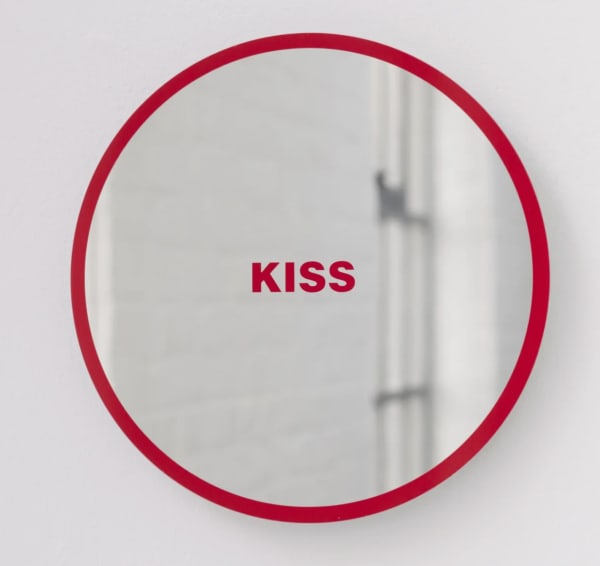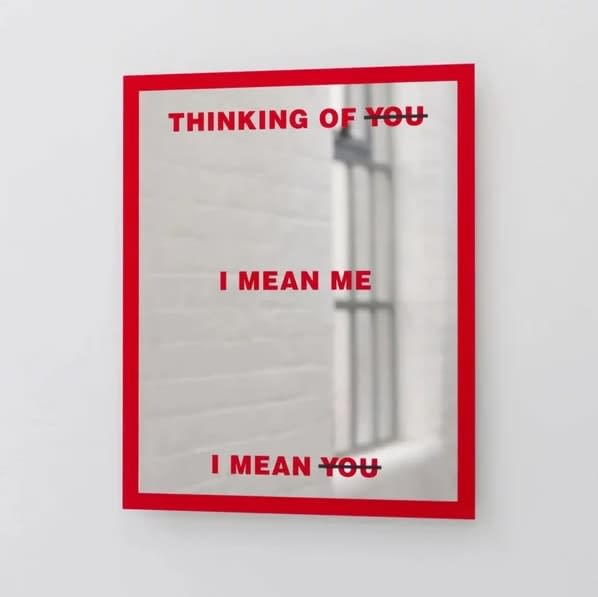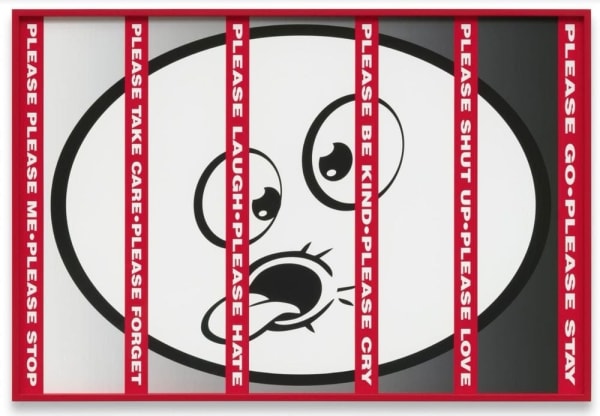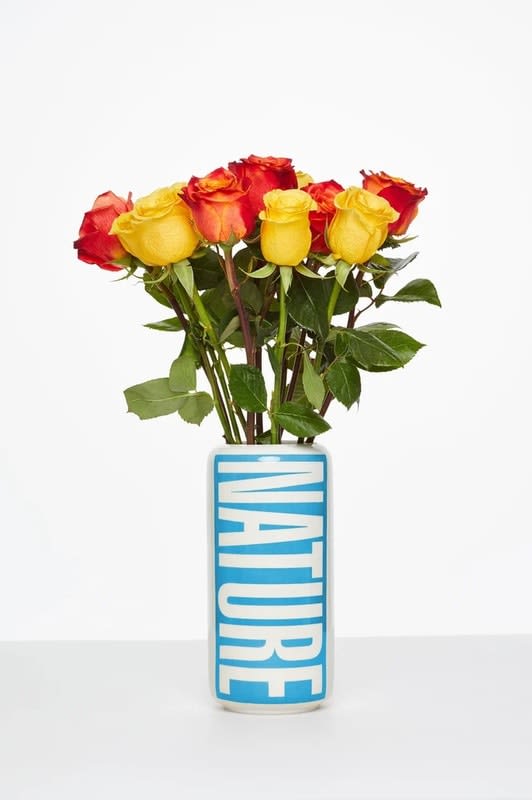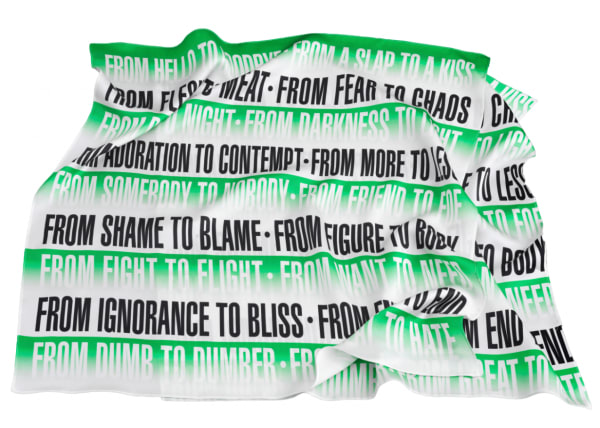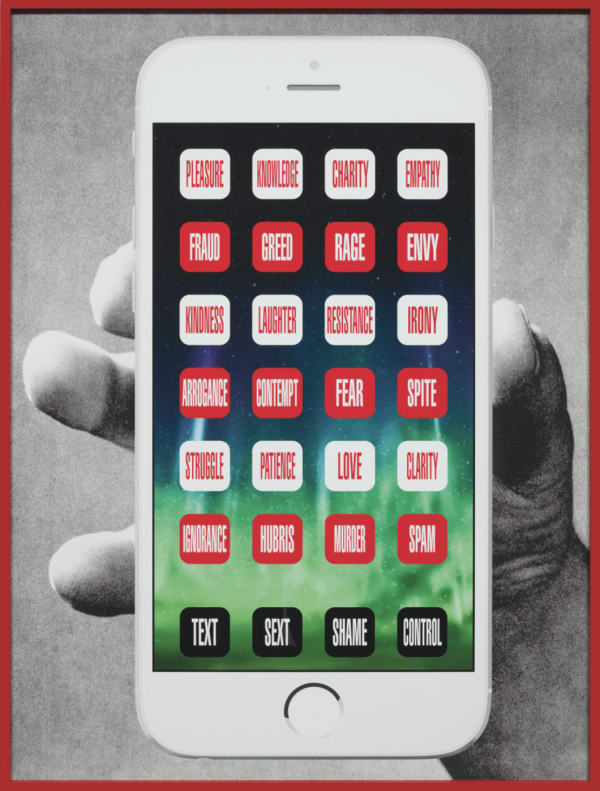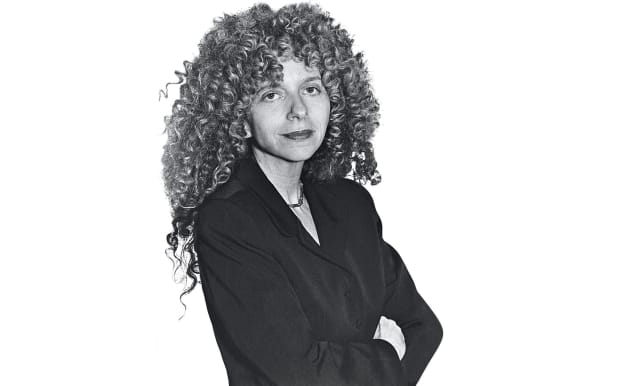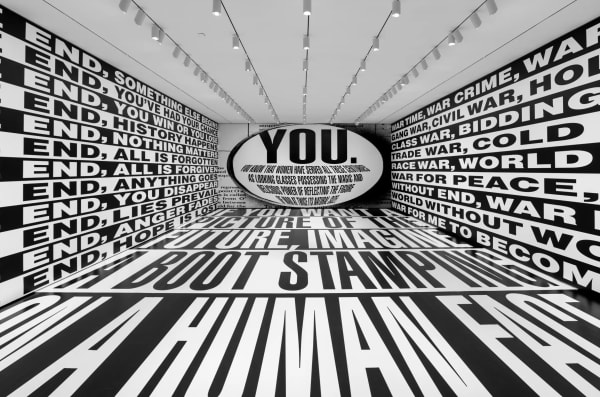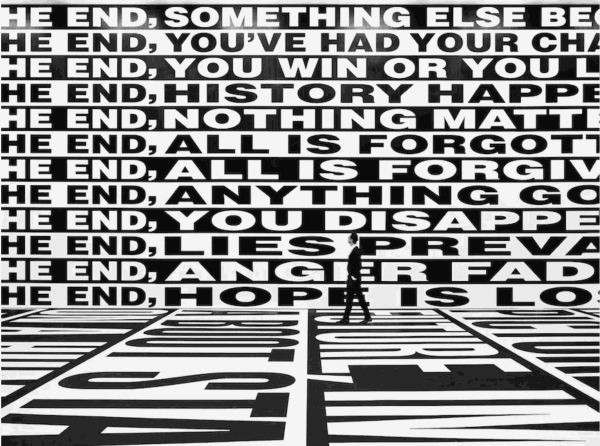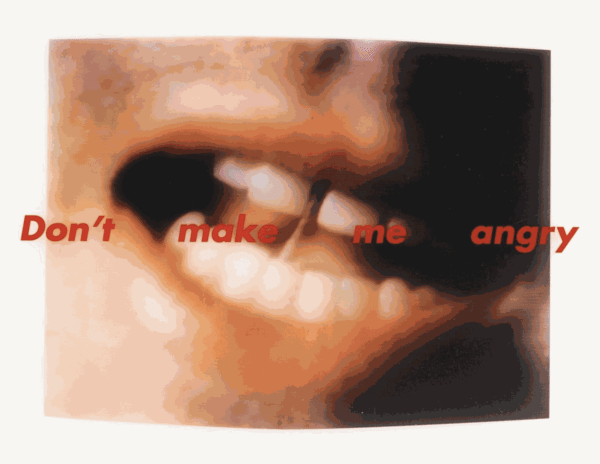-
Overview
I work with pictures and words because they have the ability to determine who we are, what we want to be and what we become.
Barbara Kruger, born on January 26, 1945, in Newark, New Jersey, is a prominent American conceptual artist and collagist known for her thought-provoking works that blend text and image to critique consumer culture and address issues of identity, power, and gender. Kruger’s distinctive style, characterized by bold white-on-red text over black-and-white photographs, has made her an influential figure in contemporary art.
Kruger attended Syracuse University for a year before transferring to the Parsons School of Design in New York City. At Parsons, she studied with notable artists and designers, including Diane Arbus and Marvin Israel. After leaving Parsons, Kruger worked as a graphic designer, art director, and picture editor in the art departments of various publications, including Mademoiselle magazine. This experience honed her skills in visual communication and profoundly influenced her artistic approach.
In the late 1970s, Kruger began developing her signature style. She appropriated images from mass media and superimposed them with declarative captions set in Futura Bold typeface. Her works often feature provocative statements such as "Your body is a battleground," "I shop therefore I am," and "We don't need another hero." These pieces challenge viewers to consider the underlying messages in advertising and the pervasive impact of mass media on personal and societal values.
Kruger's art delves into feminist themes, questioning traditional gender roles and the objectification of women. Her use of pronouns like "you," "we," and "they" creates an engaging dialogue with the audience, implicating them in the issues she raises. Her works have been displayed in major museums and galleries worldwide, including the Museum of Modern Art in New York, the Tate Modern in London, and the Los Angeles County Museum of Art.
Beyond the gallery space, Kruger’s work extends into public art and installations. Notable examples include her large-scale installations in public spaces, such as billboards, buses, and buildings. These installations democratize art by bringing it into everyday environments, further emphasizing her critiques of consumerism and power structures.
Kruger's influence extends to the realms of advertising, design, and popular culture. Her work has inspired numerous artists and designers, and her visual style is frequently referenced and imitated. In addition to her artistic practice, Kruger has taught at institutions such as the California Institute of the Arts, the School of the Art Institute of Chicago, and UCLA.
Throughout her career, Barbara Kruger has remained a powerful voice in contemporary art, continually pushing the boundaries of how art can engage with critical social issues. Her incisive critiques of media, culture, and politics resonate with audiences, making her a pivotal figure in the discourse of visual culture and feminist art.
-
Select Conceptual Works by Barbara Kruger
-
 Barbara KrugerUNTITLED (KISS), 2024
Barbara KrugerUNTITLED (KISS), 2024 -
 Barbara KrugerUntitled (Mirror), 2024
Barbara KrugerUntitled (Mirror), 2024 -
 Barbara KrugerPlease, 2023
Barbara KrugerPlease, 2023 -
 Barbara KrugerUntitled (Vase, 2020
Barbara KrugerUntitled (Vase, 2020 -
 Barbara KrugerUntitled (Hello/Goodbye), 2023
Barbara KrugerUntitled (Hello/Goodbye), 2023 -
 Barbara KrugerUntitled (Kiss) Stool, 2019
Barbara KrugerUntitled (Kiss) Stool, 2019 -
 Barbara KrugerDu Willst es. Du Kaufst es. Du Vergisst es. (You Want It. You Buy It. You Forget It.), 2014
Barbara KrugerDu Willst es. Du Kaufst es. Du Vergisst es. (You Want It. You Buy It. You Forget It.), 2014 -
 Barbara KrugerUntitled (Connect), 2015
Barbara KrugerUntitled (Connect), 2015
-
-

-
Series

Barbara Kruger
Untitled (Do You Feel Comfortable Losing?), 200632 acrylic polymer pieces with miniature speakers and printed board with integral electronic and computer components40 1/8 x 37 1/4 x 9 in
101.9 x 94.5 x 23 cmEdition of 7Series: 2000-Copyright The ArtistBarbara Kruger's work directly engages viewers with its bold, declarative statements and strategic use of pronouns like 'I,' 'You,' and 'We.' Her art prompts us to question mainstream media and...Barbara Kruger's work directly engages viewers with its bold, declarative statements and strategic use of pronouns like "I," "You," and "We." Her art prompts us to question mainstream media and the messages that shape our identities and society. Kruger’s practice, spanning over four decades, merges seductive visual elements with a critical perspective, compelling viewers to scrutinize the visual signifiers of faith, morality, and power.
Kruger, born in 1945 in Newark, New Jersey, was significantly influenced by the advertising boom of her youth. Her early training at Syracuse University and Parsons School of Design, coupled with her experience as a graphic designer and picture editor at Condè Nast Publications, deeply informed her artistic approach. This background provided her with a keen understanding of the cultural impact of images, which she leverages in her art to critique and analyze mass-media culture.
Central to Kruger’s work is her use of Futura Bold Oblique and Helvetica Ultra Compressed typesets, which she employs to mimic the graphic strategies of advertisements. This choice is evident in works like "Untitled (You Invest in the Divinity of the Masterpiece)" (1982), where she juxtaposes Michelangelo’s Sistine Chapel with accusatory slogans, questioning our complicity in upholding institutional power. Her art frequently tackles themes of feminism, consumerism, and individual autonomy, urging viewers to reflect on their roles within these power structures.
A notable example of Kruger’s provocative style is her 1989 piece "Untitled (Your body is a battleground)," created for the Women’s March on Washington. This work, featuring the phrase “Your body is a battleground” over a split image of a woman’s face, addresses reproductive rights and highlights her commitment to social justice. Kruger’s ability to repurpose mainstream media images to critique the very ideas they promote exemplifies her skill in engaging viewers in a dialogue about power and control.
Kruger’s art often extends beyond traditional gallery spaces into public arenas. Her "Untitled" matchbook series from 1986, for instance, distributed provocative messages on everyday objects, emphasizing how power dynamics infiltrate daily life. By placing her art in public spaces, she makes her critical messages accessible to a broader audience, challenging viewers to recognize the pervasive nature of societal control.
Kruger’s immersive installations further amplify her critical messages. From her 1991 exhibition at Mary Boone Gallery to her planned 2022 installation at MoMA, her site-specific works envelop viewers in provocative text and images, creating environments that challenge them to reconsider their perceptions. By transforming spaces with her art, Kruger underscores how physical environments shape our experiences and beliefs, urging viewers to critically engage with the world around them.
Throughout her career, Barbara Kruger has consistently used the visual language of commercial advertising to critique societal norms and power structures. Her work blurs the lines between art, product, and ideology, compelling viewers to question the narratives constructed by mass media. By implicating the viewer in her critiques, Kruger reveals the complex interplay between power, identity, and society, making her art a powerful tool for social commentary.News-

Barbara Kruger: Text, Image, and the Politics of Power
A Guide to Barbara Kruger September 10, 2025Barbara Kruger is one of the most influential and provocative artists of the late 20th and early 21st centuries. Known for her bold, confrontational works...Read more -

Barbara Kruger: The Power of Text in Visual Culture
July 1, 2025Barbara Kruger is one of the most influential conceptual artists of the late 20th and early 21st centuries, best known for her bold, text-driven artworks...Read more -

Barbara Kruger Text As Power
An exploration July 8, 2024Barbara Kruger , born on January 26, 1945, in Newark, New Jersey, is a prominent contemporary artist known for her distinctive use of text and...Read more

